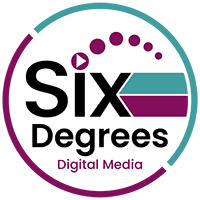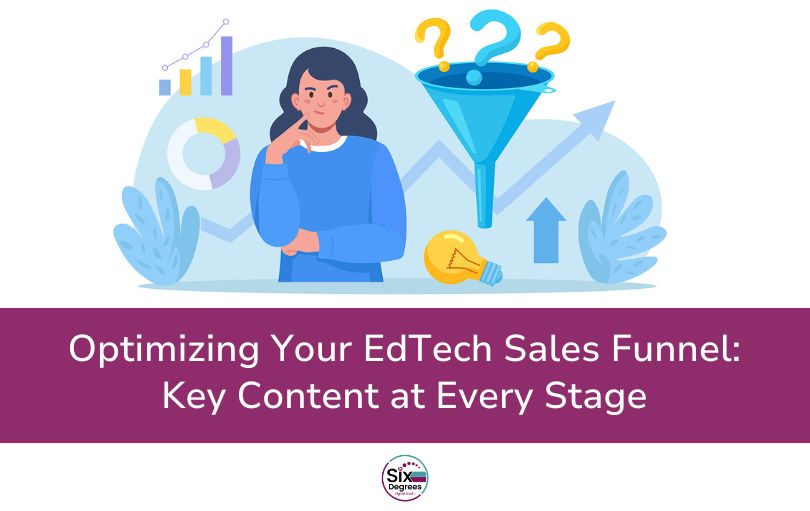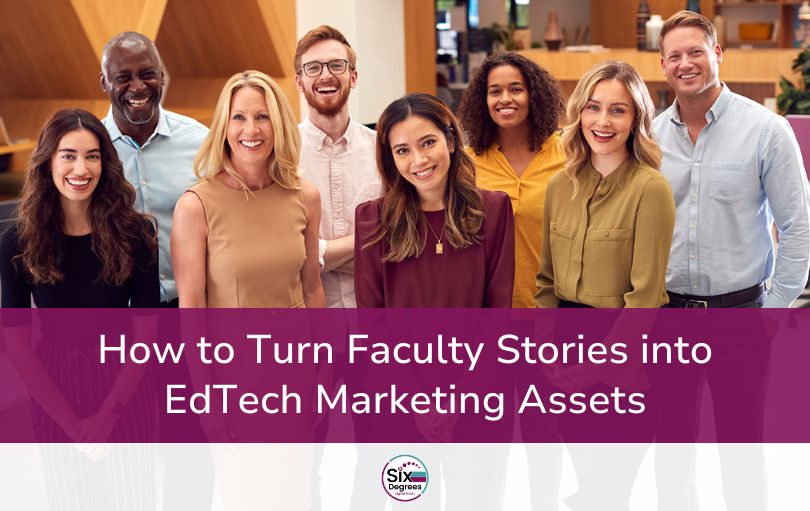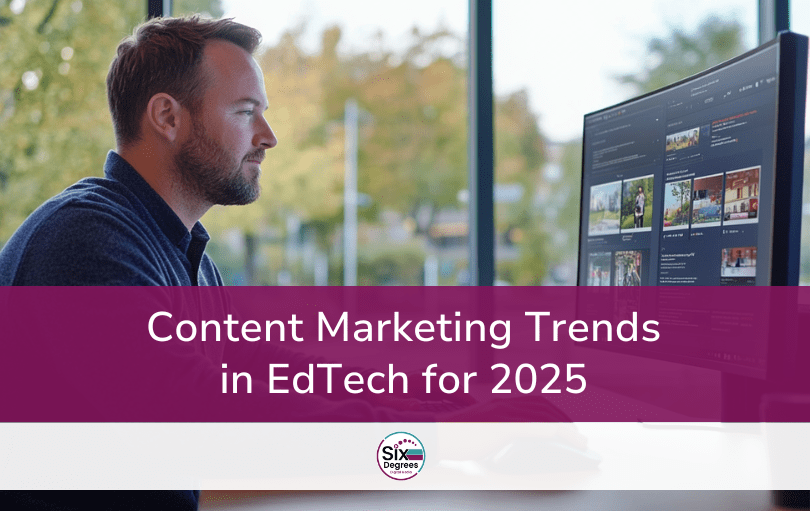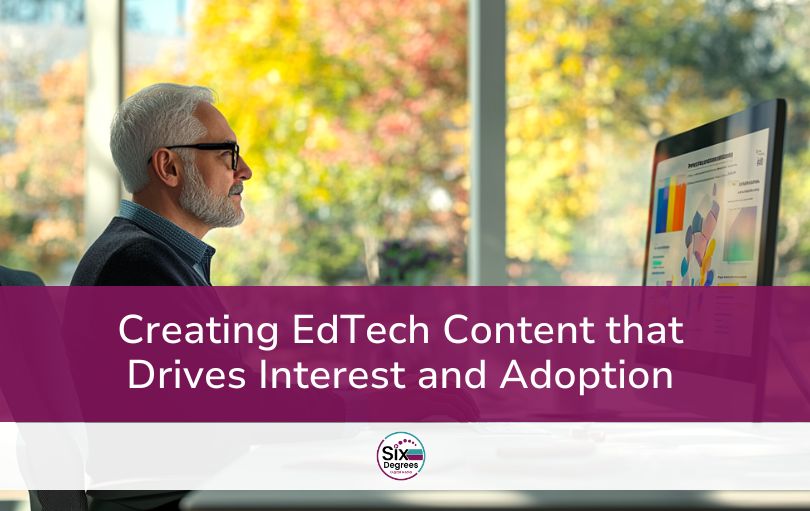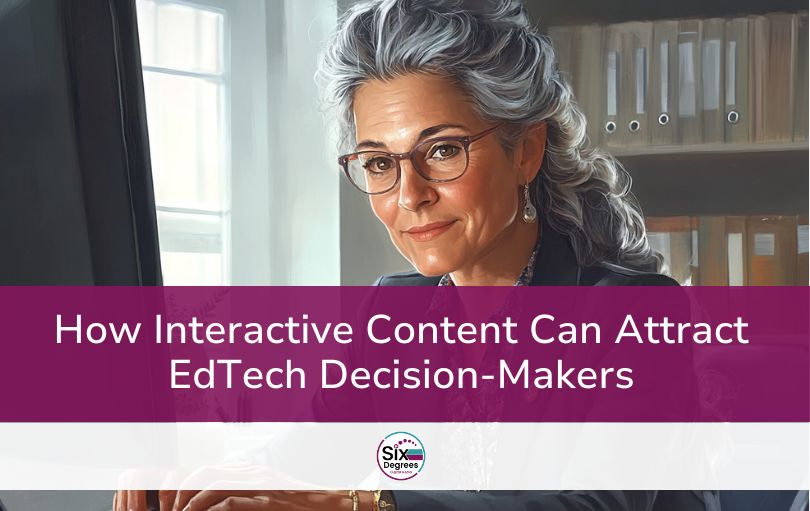Getting an EdTech solution into the hands of schools and institutions isn’t as simple as showing off features and expecting an instant “yes.” Unlike direct-to-consumer products, these decisions involve multiple stakeholders, budget approvals, and plenty of scrutiny. Schools need more than a good sales pitch—they need education, trust, and proof before making a commitment.
Yet many EdTech companies struggle to move prospects through the sales funnel efficiently. The process stalls when potential buyers can’t find the right information at the right time. Questions go unanswered, doubts linger, and interest fades. Without a clear content strategy to guide prospects from awareness to decision, even the best EdTech solutions can end up overlooked.
The key? Content that nurtures leads at every stage of the funnel. From insightful blog posts that position your brand as a trusted resource to case studies that prove real-world impact, every piece of content should serve a purpose, moving buyers one step closer to action.
In this guide, we’ll break down the essential content types that support each phase of the EdTech sales process, helping you shorten decision cycles, build trust, and drive conversions.
Understanding the EdTech Sales Funnel
Schools and institutions don’t make split-second decisions when investing in EdTech. The buying process is deliberate, often slow, and filled with questions. Multiple stakeholders, from administrators to IT teams, need to see clear value, real success stories, and a strong return on investment before they’re willing to commit.
This is where strategic content becomes your best sales tool. Instead of relying on cold outreach and one-size-fits-all messaging, a well-structured sales funnel delivers the right information at the right time, keeping prospects engaged and moving toward a confident decision.
A successful content strategy aligns with the three key stages of the funnel:
- Awareness Stage – Prospects are just discovering your brand. They need educational content that answers industry questions, highlights key challenges, and positions your company as a trusted resource, without a hard sales pitch.
- Consideration Stage – Buyers are actively evaluating solutions and comparing options. They’re looking for case studies, product comparisons, and in-depth resources that showcase your competitive edge.
- Decision Stage – Prospects are ready to commit but need reassurance. Customer testimonials, free trials, ROI calculators, and product demos provide the final push to eliminate hesitation and drive conversion.
Awareness Stage: Attracting the
Right Audience
Before a school or institution even considers an EdTech solution, they need to identify their challenges, explore possible solutions, and stay informed on industry trends. At this stage, your goal isn’t to sell but to position your brand as a trusted source of valuable insights.
The best content for the awareness stage includes:
- Educational blog posts that answer industry questions, like “How Can Digital Tools Improve Student Engagement?”
- SEO-driven content that ensures your audience finds answers through organic search.
- Thought leadership articles that explore EdTech trends, research findings, and expert insights.
- Infographics and explainer videos that break down complex topics in a simple, engaging format.
For example, a blog post titled “5 Emerging Trends in K-12 Digital Learning Solutions” introduces key industry changes while reinforcing your brand as an authority. This type of content builds trust, drives organic traffic, and makes prospects more likely to engage with your brand as they move through the funnel.
Consideration Stage: Building Interest and Trust
At this stage, potential buyers are no longer just browsing. They are comparing solutions, weighing pros and cons, and trying to determine which option is truly worth the investment. This is where content needs to shift from awareness to persuasion. Buyers need to see proof, value, and differentiation before they move forward.
Your content should not just list features. It should tell a story about why your solution is the right fit and make it easy for decision-makers to envision real results.
The most effective content at this stage includes:
- Case studies that showcase real-world success, demonstrating measurable impact and clear takeaways
- Comparison guides that highlight key differentiators, such as user experience, integrations, or cost-effectiveness
- Webinars and interactive demos that let prospects experience your product in action and address lingering concerns
- Email nurture sequences that deliver personalized insights, answer objections, and reinforce the value proposition
For example, a case study about a career school that boosted student retention by 20% using your platform gives potential buyers something tangible. It shows them that your solution isn’t just theoretical, it works.
[Download: How to Drive More Sales with Your Edtech Demo]
Decision Stage: Driving Conversions
At this point, your prospects are on the verge of saying yes, but hesitation can still hold them back. Maybe they need one last push to feel confident. Maybe they need hard numbers to present to stakeholders. Your content should eliminate doubts and make the decision feel easy.
The most effective content for driving conversions includes:
- Demos, free trials, and interactive product tours that allow prospects to experience your platform in action
- ROI calculators that show concrete benefits, from time savings to cost reductions and improved student outcomes
- Customer testimonials and video reviews that showcase real success stories and provide social proof
- Limited-time offers and exclusive perks that create urgency, such as early adopter discounts or personalized onboarding support
For example, an ROI calculator that demonstrates how much a school can save with your software turns an abstract benefit into a compelling business case. Decision-makers need clear, measurable impact to justify their investment, and this kind of content helps remove the last bit of uncertainty.
Optimizing & Measuring Your
Sales Funnel Content
Creating content for each stage of the sales funnel is just the beginning. If you want real results, you need to track what’s working, experiment with different approaches, and continuously refine your strategy based on data and feedback. A good funnel isn’t static, it evolves.
Key steps for optimization:
- Track engagement metrics to see what content resonates most. Look at time spent on pages, email open rates, and demo sign-ups to gauge how well your content moves prospects through the funnel.
- Use A/B testing to experiment with landing pages, email sequences, and call-to-action messaging. Small tweaks in copy, design, or CTA placement can significantly improve conversions.
- Refine content based on real-world feedback. If your sales team hears the same objections repeatedly, update your content to address those concerns earlier in the funnel.
For example, if a product demo is getting high engagement but low conversions, that may signal a gap in follow-up content. Adding a well-placed case study, a compelling testimonial, or a more personalized outreach strategy could make all the difference.
Moving Forward
A well-structured content strategy aligned with each stage of the EdTech sales funnel can shorten sales cycles, build trust, and increase conversions. When prospects receive the right content at the right time, they feel informed, confident, and ready to take action.
Even small improvements—like refining case studies, optimizing email sequences, or introducing interactive demos—can have a major impact on engagement and sales. The key is to track performance, adapt based on audience behavior, and fine-tune your content for maximum effectiveness.
Need a smarter approach to your sales funnel? Let’s us help craft a strategic content plan tailored for your EdTech business.
